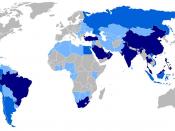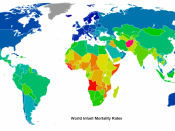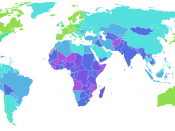There are many factors that affect the rates of fertility/mortality and statistics indicate that a definitive world pattern has emerged. These factors include healthcare, politics, status of women, social and economical changes and the availability of resources. This worldly pattern can be seen in the divisions of developing and developed countries. It is common for developing countries to have a high fertility/mortality while developed countries display a low fertility/mortality.
In developing countries, the fertility/mortality rates are extremely high especially compared to developed countries. Afghanistan has a total fertility rate of 7.5 and Niger with 7.9 which rank among the highest in the developing countries. Most people in developing countries are usually poorly educated about hygiene and family planning matters. With poor hygiene, people tend to fall sick more often and there is little health care available. Even if there is a healthcare service nearby, most people might not be able to afford the cost for treatment, therefore resulting in a higher mortality rate.
Since many of these women are unable to afford healthcare services, they choose to give birth at home and if any implications arise, there are no immediate medical aids available to them resulting in a high infant mortality rate. In Afghanistan, more than 1900 women died during childbirth in 2000 while 1100+ women died in Zimbabwe and another 1400 in Rwanda. Knowing that their child may not survive, these women tend to reproduce more to ensure the survival of at least one child.
Diseases are also another major contributing factor to the high mortality rate in developing countries. Poor hygiene and the lack of education on the prevention of the spread of these diseases cause many people to become infected. An example of this is HIV/AIDS. In Sub-Saharan Africa, more than 60% of people are living...


